South Africa's Bloody History - Murders, A Battle, and A Clash of Cultures in 1838
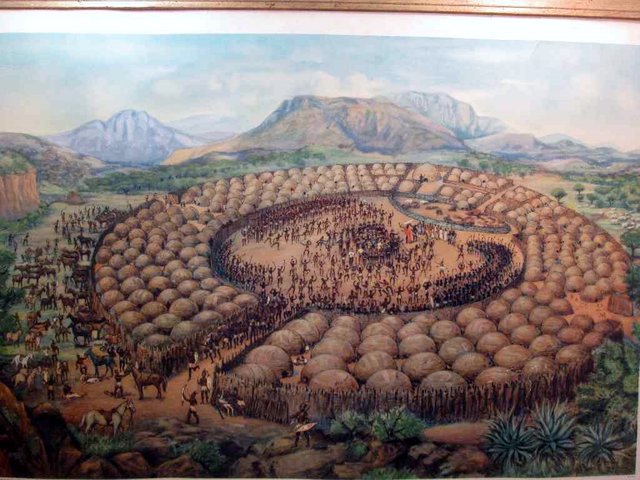
On Wednesday my husband bought these awesome, rather lurid, prints covering one of South Africa's most historic battles, The Battle Of Bloodriver, and the events leading up to it. The prints are entitled "Die Moord Op Piet Retief" (translates to: The murder of Piet Retief). This resulted in Die Slag Op Boedrivier" (translates to: the slaughter at Bloodriver.)
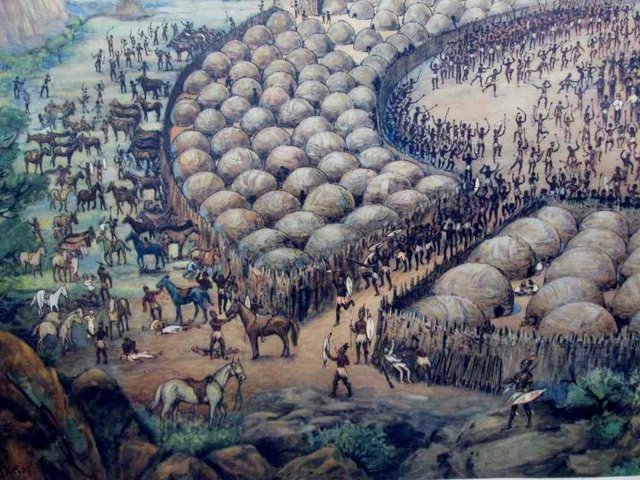
During the 1820's, mainly Dutch speaking settlers in South Africa became disenchanted with the British administration at the Eastern Cape. They began an organised move into the interior of South Africa, travelling in Ox Wagons. This mass migration of about 15 000 people, divided into smaller groups, was known as The Great Trek. (The big move.) These Dutch settlers, know as the Voortrekkers, had to negotiate with the indigenous African tribes, who were quite legitimately wary of them and their superior weaponry.
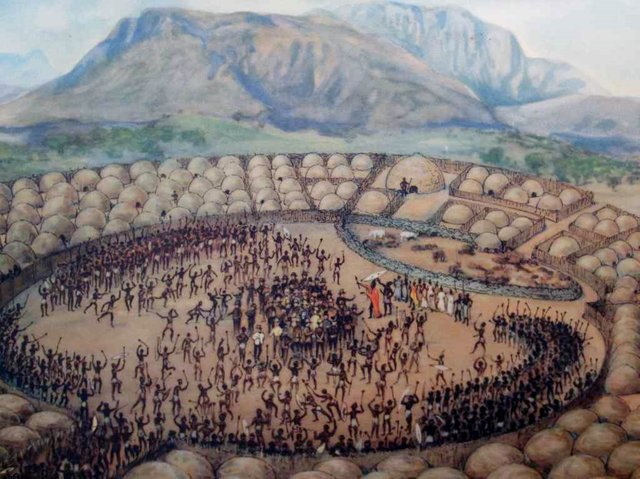
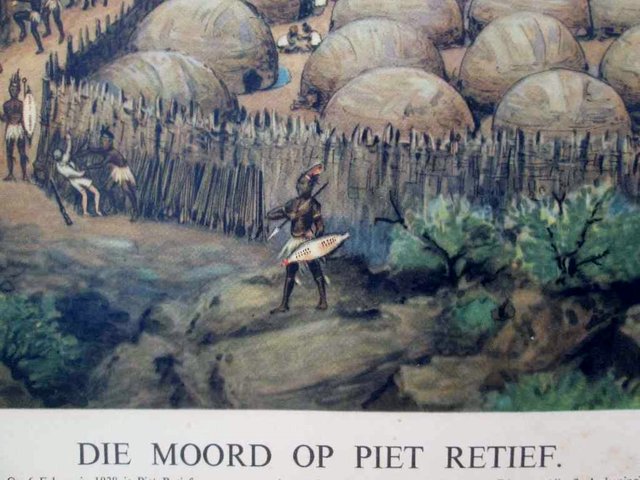
The exact sequence of events that led to the murder of Piet Retief is open for debate. Piet Retief was the leader of a Voortrekker group who negotiated with Dingane, King of the Zulus, for a portion of land to be ceded to them. Dingane asked Piet Retief to recover stolen cattle from a neighbouring chief, and in return he would cede land to him. Piet Retief and his men easily accomplished the task, thus demonstrating the Voortrekker's superior military power. It is widely accepted that Dingane had a policy of not accepting neighbours with military strength. He invited Piet Retief and 67 of his men to a feast to celebrate the successful return of his cattle. Dingane told them weapons were not allowed in the chief's compound as a sign of respect, and then proceeded to murder them all. Another version of the story is that Piet Retief surrounded Dingane's kraal (homestead) with the intention of attacking it, and Dingane murdered Piet Retief and his men in self defense. No matter the story, it was clear the land would not be voluntarily ceded to the Voortrekkers.
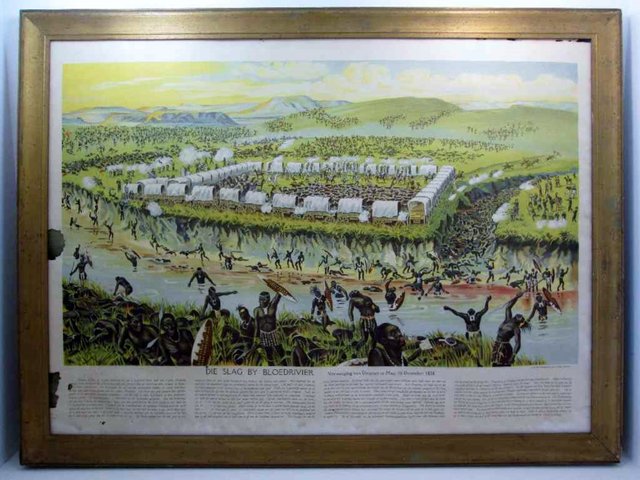
During November 1838 Andries Pretorius was appointed commander of a Voortrekker commando who set out to defeat Dingane, and his Zulu warriors. The Voortrekkers strategically arranged their Ox Wagons into a defensive laager formation, (a circle) and waited for the Zulu's to attack. They were outnumbered approximately 464 to 10 000 men, so they made their famous vow to God. If they won the battle they would forever commemorate the day of victory as a covenant to God. On the 16th December 1838 the Zulu warriors were slaughtered by the firepower of the Voortrekker fighters, and the battle was won.
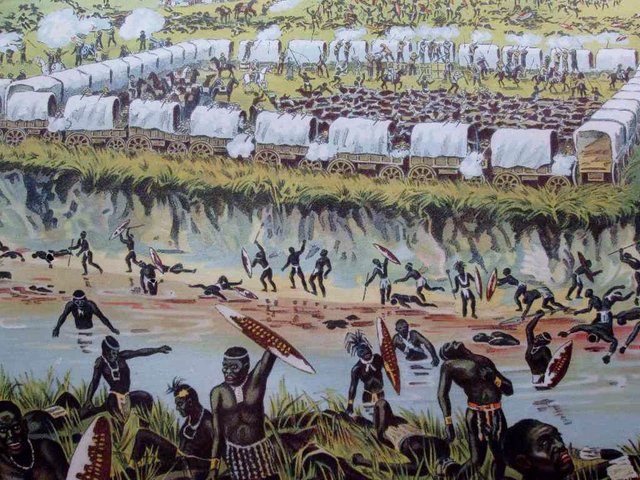
True to their word, the 16th of December was reverently celebrated each year and in time the Apartheid South African government instated it as a public holiday, called Day of the Vow. For obvious reasons this public holiday was politically contentious. When Apartheid was abolished and the first democratically elected government was formed in South Africa in 1994, the Day of the Vow was renamed Day of Reconciliation. Unfortunately exactly how much reconciliation has since taken place is yet another subject for debate, and ironically, land ownership issues remain highly contentious.
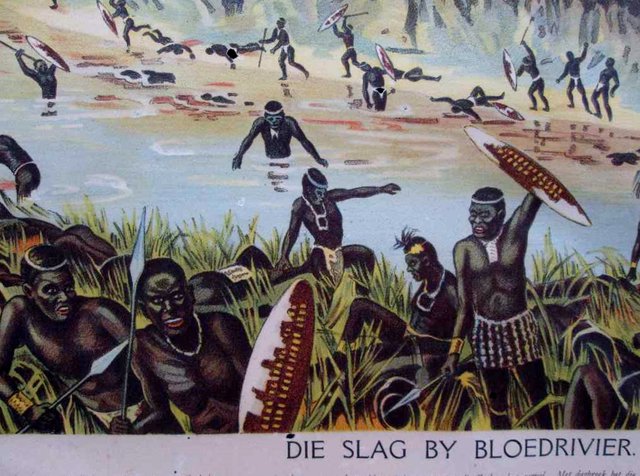

All photographs were taken of the two prints I currently have for sale on the South African auction site, Bid or Buy. If you would like to view the auction, request the links in the comments.
Thank you for reading. Please follow me @onetree
The story of the Battle of Bloodriver in Afrikaans (similar to Dutch).
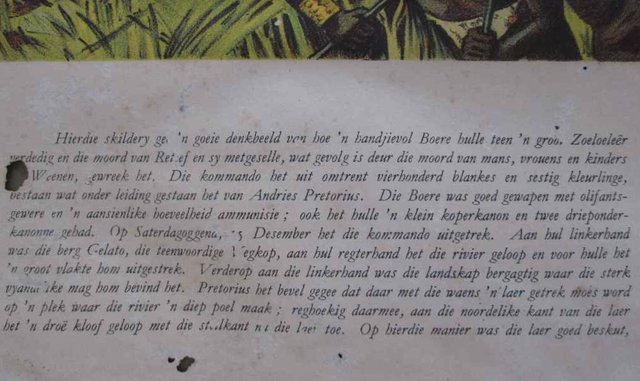
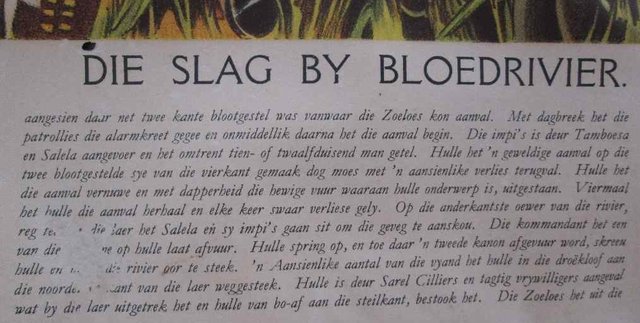

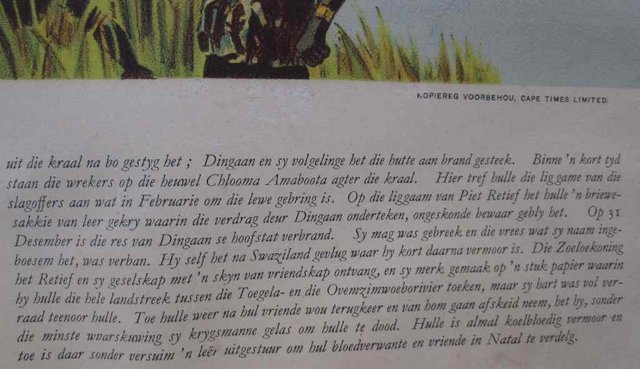
Those look tremendous.
I know, right! I love them!
Hello - just read your article about growing up in SA in the seventies. I'm working on a feature film project about SA during that period and am trying to track down original footage. Wondering if you have any home videos from your childhood or know family and friends that would? please get in touch [email protected] - Thanks! Lauren
I don't have any! I will ask around. :)
Thanks!